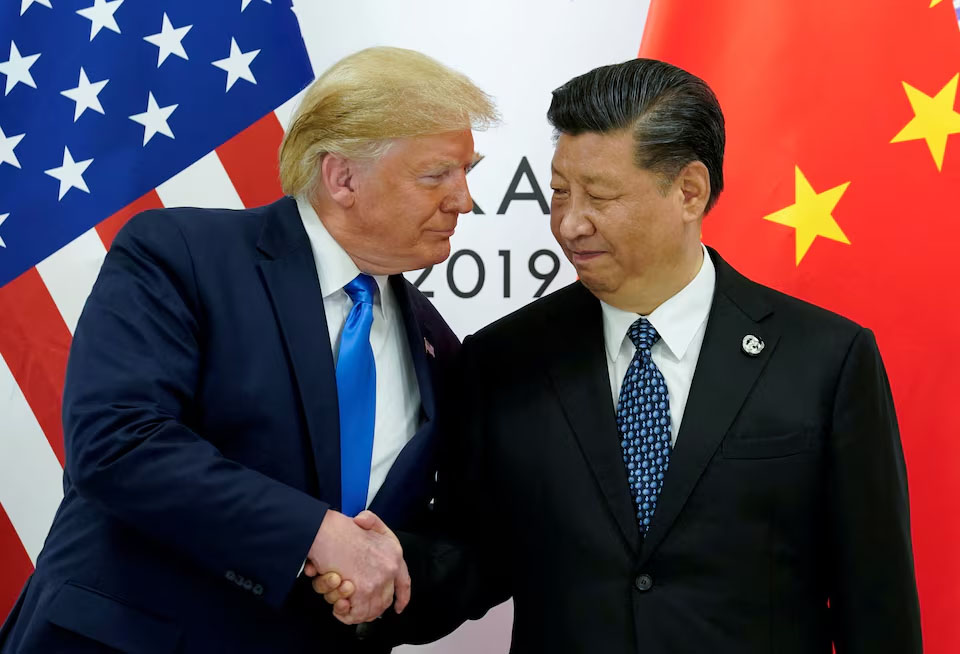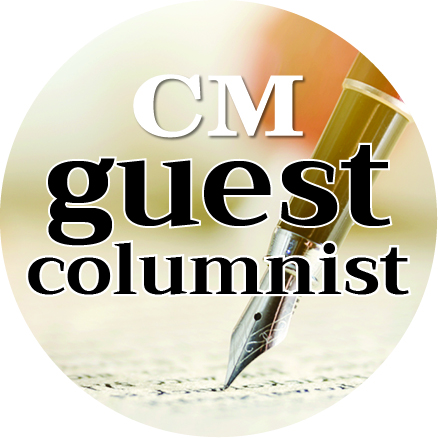Washington and Beijing must resist the temptation to frame the relationship in purely zero-sum terms
By Euripides L Evriviades
Thucydides, the Athenian historian of the 5th century BCE, observed in the “Peloponnesian War” that “It was the rise of Athens and the fear that this instilled in Sparta that made war inevitable.” This diagnosis of the structural causes of conflict has echoed through the corridors of history and diplomacy for centuries, offering a lens through which to view, analyse and understand the world’s great power rivalries.
My university professor Graham Allison in his seminal work “Destined for War: Can America and China Escape Thucydides’s Trap?” (2017) revived and popularised this ancient insight to frame the challenge of our age: the relationship between a reigning hegemon, the US, and a rising power, China. The question before us is stark yet unresolved: Is war between these two great powers inevitable with consequences for the entire world, or can statesmanship prevail over structural determinism?
Thucydides reminds us elsewhere in his “History of the Peloponnesian War”: “The strong do what they can and the weak suffer what they must.”
This enduring observation underscores the brutal logic of power politics. But it also invites us to consider whether we can transcend its darker outcomes through diplomacy and leadership.
Nixon, Kissinger and the opening to China
For much of the 20th century, US-China relations oscillated between enmity and rapprochement. Following the communist revolution of 1949, the US and the PRC found themselves on opposing sides of the Cold War divide, sharpened by the Korean War and mutual non-recognition.
It was not until President Richard Nixon and his National Security Advisor, Henry Kissinger, engineered the dramatic opening to China in 1972 that the tectonic plates began to shift. This diplomatic masterstroke was less about ideological conversion and more about strategic calculus, a triangular balance intended to exploit the Sino-Soviet split and recalibrate Cold War dynamics.
Kissinger’s shuttle diplomacy and Nixon’s visit to Beijing remain emblematic of diplomacy at its finest: bold, calculated and anchored in realpolitik. Yet even as this engagement normalised relations and brought China into the global order, it also laid the groundwork for the strategic rivalry we witness today.
The rise of China: From “hide and bide” to assertiveness
Deng Xiaoping’s policy of “hide your strength, bide your time” characterised China’s posture for decades. Economic reforms, coupled with accession to the World Trade Organisation in 2001, ushered in unprecedented growth, lifting hundreds of millions out of poverty and transforming China into the world’s second-largest economy.
But with power came confidence. And with confidence, assertiveness. Under President Xi Jinping, the rhetoric of “peaceful rise” has given way to the “Chinese Dream” of national rejuvenation. From island-building in the South China Sea to the ambitious Belt and Road Initiative (BRI), Beijing has signaled its intent not merely to participate in the global order but to shape it.
China’s strategic discipline, long-range perspective and deep cultural and historical awareness, shaped by the collective memory of the “Century of Humiliation”, remain central to its worldview.
The growing asymmetry between China’s economic clout and its geopolitical ambitions has intensified American anxieties, setting the stage for strategic confrontation.
Enter Trump: tariffs, technology and a new Cold War
Trump’s first administration (2017-2021) marked a decisive break from decades of engagement with China. The 2017 National Security Strategy (NSS) formally designated China as a “strategic competitor”, setting the stage for a sharp shift in US policy. In 2018, the administration launched a trade war, imposing punitive tariffs on Chinese imports, prompting swift retaliation from Beijing.
Technology quickly became a second front. Firms like Huawei and TikTok, along with critical semiconductor supply chains, emerged as flashpoints in a broader struggle for technological leadership and national security advantage.
The Covid-19 pandemic deepened mistrust, especially as disputes over the virus’ origins intensified competing narratives of blame.
The tech race and the AI frontier
If the first Cold War was defined by nuclear arms and ideological rivalry, this new era is increasingly shaped by competition over emerging technologies, none more critical than Artificial Intelligence (AI). Whoever leads in AI, machine learning and quantum computing will possess not only economic advantage but also military and strategic superiority.
AI is not merely an economic multiplier. It shapes diplomacy, trade, democracy, human rights and the rule of law. But it also influences military doctrines, decision-making speeds and information dominance. These factors could increase the risk of miscalculation in a crisis. As systems become more autonomous, the danger grows that machines, rather than humans, might trigger unintended escalation.
And unlike nuclear weapons, AI is far more accessible, raising the alarming prospect of its misuse by terrorists or rogue state or non-state actors. When, not if, such technologies fall into the wrong hands, their destabilising potential may rival or even surpass that of traditional weapons of mass destruction. This does not, of course, excuse all forms of abuse and neither does it absolve the AI innovators from acting as enablers and suppressors of human rights and blatant exploitation.
The tech race thus becomes both a competition for dominance and a profound real-time governance challenge: how to ensure that AI enhances stability rather than accelerates conflict.
Structural stress and historical precedent
If history offers any guide, rising powers often seek to challenge the status quo, while reigning powers move to defend it. Of the 16 cases Allison studied where a rising power confronted an established one, 12 ended in war.
Yet history is not destiny. Unlike Sparta and Athens, the US and China are nuclear powers, deeply interdependent economically, and enmeshed in a globalised world where the costs of conflict would be catastrophic, not only for themselves, but for the stability and prosperity of the entire world, including the vital shared spaces of the global commons.
Moreover, there is no ideological inevitability here. The contest is not simply between two blocs but between two models of governance and influence, each seeking to assert its vision without clear rules of engagement.
The essential challenge is to prevent strategic competition from sliding into catastrophic conflict.
Diplomatic mechanisms – whether through hotlines, military-to-military (M2M) communications, or strategic dialogues – must be strengthened. Confidence-building measures in the South China Sea and Taiwan Straits, as well as cooperative ventures on global issues like climate change, pandemic response, and yes, AI governance, offer avenues to reduce friction.
Washington and Beijing must resist the temptation to frame the relationship in purely zero-sum terms. The rhetoric about “decoupling” and “containment” risks hardening positions and closing off diplomatic space. Instead, what is required is a paradigm of managed competition, underpinned by mutual recognition of interests and red lines.
Thucydides warned of the perils of fear and rising ambition. But he did not declare those consequences as inevitable. Outcomes are not written in the stars; they are shaped by the choices of leaders and the courage of diplomacy.
Whether the US and China are destined for conflict or capable of forging a stable modus vivendi will depend on wisdom, restraint and the patience of their peoples. The stakes are not confined to the Pacific Rim; they reach across the globe, touching the peace and prosperity of all nations.
In the end, the Thucydides Trap is not a prophecy. It is a warning; one that the United States and China cannot afford to ignore, nor can the world.
Euripides L Evriviades is a former ambassador to the US and high commissioner to the UK. He is also a senior fellow at the Cyprus Centre for European & International Affairs







Click here to change your cookie preferences